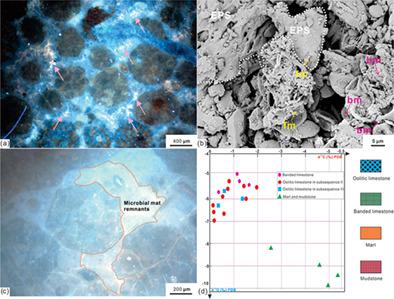当前位置:
X-MOL 学术
›
Geolog. J.
›
论文详情
Our official English website, www.x-mol.net, welcomes your
feedback! (Note: you will need to create a separate account there.)
Ore-forming mafic plutons emplaced at syn-collisional compressive setting in Kalatongke Ni–Cu sulphide district, Southern Altay, CAOB: New evidence from the Late Carboniferous granitic porphyries
Geological Journal ( IF 1.4 ) Pub Date : 2021-06-28 , DOI: 10.1002/gj.4202 Xue‐Hai Wang 1, 2, 3 , Xing‐Wang Xu 1, 2, 3 , Bao‐Lin Zhang 1, 2, 3 , Lei Niu 1, 2, 3
Geological Journal ( IF 1.4 ) Pub Date : 2021-06-28 , DOI: 10.1002/gj.4202 Xue‐Hai Wang 1, 2, 3 , Xing‐Wang Xu 1, 2, 3 , Bao‐Lin Zhang 1, 2, 3 , Lei Niu 1, 2, 3
Affiliation

|
The Kalatongke deposit is the largest Ni–Cu sulphide deposit in the Central Asian Orogenic Belt (CAOB) in northern Xinjiang. The tectonic setting of the Kalatongke deposit and the collision period of the Altai and East Junggar terranes remain controversial. This study involves petrological, geochemical, and geochronological evaluations of granitic porphyries in the Kalatongke. The granitic porphyries are divided into three types according to the characteristics of petrology and geochemistry, dated at ~339, ~325, and ~310 Ma. Type-1 granitic porphyry exhibits evident syn-collisional characteristics, with plagioclase phenocrysts extending in one direction. This type is metaluminous (A/CNK <1.1), characterized by low SiO2 and K2O contents, and depleted in Nb, Ta, P, and Ti. Type-2 granitic porphyry is strongly peraluminous (A/CNK >1.1) and characterized by high SiO2 and Al2O3 but low Sr contents. Type-3 granitic porphyry is also metaluminous (A/CNK <1.1) and has high SiO2 and K2O contents. The estimated crustal thickness of the Kalatongke area increased from 40 to 55 km from 339 to 310 Ma, thereby indicating that its existence within the collisional orogeny period. According to the estimated emplacement depth of the granitic and mafic intrusions, the crust had been thickening since then. During the late collision period, lithospheric detachment caused by terrane collision resulted in asthenospheric mantle upwelling and formed regional mafic intrusions along the Irtysh fault.
更新日期:2021-09-02











































 京公网安备 11010802027423号
京公网安备 11010802027423号